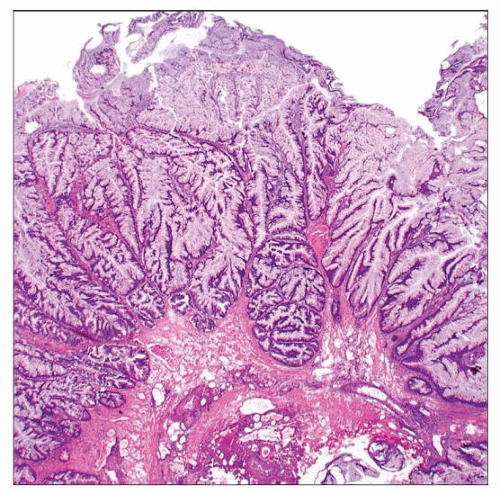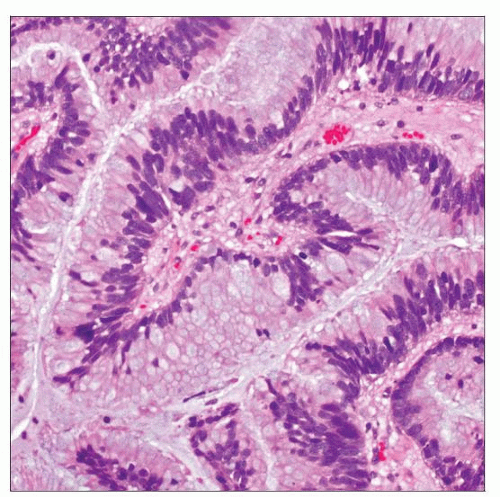Villous Adenoma
Jesse K. McKenney, MD
Key Facts
Terminology
Benign glandular neoplasm arising from urothelium
Clinical Issues
Presenting symptoms
Hematuria and irritative bladder symptoms
Rarely, mucosuria can be seen
Therapy: Complete transurethral resection
Excellent prognosis for villous adenoma with no invasive component and complete resection
Microscopic Pathology
Villoglandular architecture
Fibrovascular cores lined by pseudostratified columnar epithelium
Invasive adenocarcinoma of enteric type may arise from villous adenoma
Diagnostic Checklist
All tissue should be submitted for histologic evaluation to exclude invasive component
 Villous adenoma of the urinary bladder has an identical morphology to its more common colorectal counterpart with variable papillary architecture and obvious intracellular mucin. |
TERMINOLOGY
Definitions
Benign glandular neoplasm of urinary bladder
Histologically identical to colorectal adenomas
CLINICAL ISSUES
Epidemiology
Incidence
Rare primary bladder neoplasm
Age
Wide age range
Mean: 65 years
Gender
Male predominance
Site
Common sites include bladder dome and trigone
May also occur in urachus
Presentation




